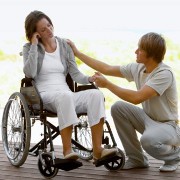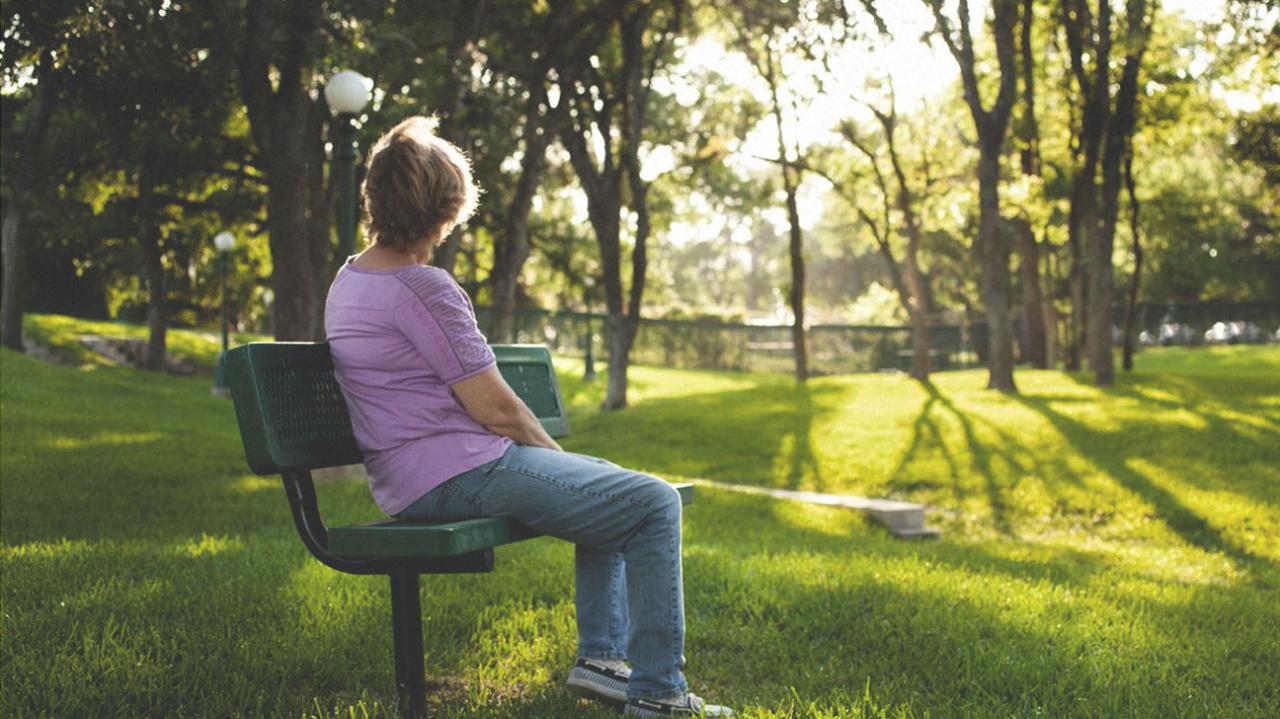Pain from arthritis can strike earlier than you think. Here’s what every woman needs to know about arthritis symptoms, natural remedies, safe exercise, and more.
1. Arthritis is just achy joints, right?
Yes, essentially. Arthritis literally means “inflammation of a joint”—the place where two bones connect, according to the American Academy of Orthopaedic Surgeons. More than 100 different types of arthritis exist, but osteoarthritis, which we’ll address in this article, is the most common, affecting nearly 27 million Americans, almost 60 percent of whom are women.
Cartilage—the slippery tissue that protects the ends of your bones in the joint—gradually wears down in osteoarthritis. This can leave you feeling stiff and old lady-ish when you climb out of bed or your knees can feel achier than usual after you work out. Nobody knows exactly what causes this cartilage breakdown, but a combination of factors like genetic tendencies, aging, joint injuries, and obesity, are all thought to play a role, said the Mayo Clinic.
Boost health naturally! Check out the best vitamins and supplements for women
2. Wait, what’s rheumatoid arthritis?
Rheumatoid arthritis, known as RA, is the other most common type. The end result is the same—stiff, achy joints—but rheumatoid arthritis is an autoimmune disease. The body’s immune system attacks its own joints, causing their lining to swell and hurt. RA is almost three times more likely to strike women than men, and it tends to first occur between ages 25 and 50. Regular arthritis tends to most affect weight-bearing joints, such as the knees and hips; whereas rheumatoid arthritis more often impacts the entire body: both large and small joints as well as other organs.
We’re focusing primarily on osteoarthritis in this article. Read the article linked above for more information on rheumatoid arthritis—including RA causes, symptoms, treatments, and natural remedies.
3. I’m 39! Could I really have arthritis?
When you think of arthritis, you picture stiff, sore seniors doing water aerobics, but the truth is, nearly 60 percent of people diagnosed are under age 65. Arthritis typically affects people over 40, but it can happen sooner, especially if you've had a joint injury.
Being overweight may lead to arthritis of the knees because of the increased stress on the joints. Genes may also play a role: Middle-aged and older women with a family history of arthritis have a particularly high risk. But although age is a risk factor, arthritis doesn’t have to be an inevitable part of getting older.
4. What symptoms should I look for?
The first stages of arthritis may be silent; mild cartilage damage typically has no symptoms. Arthritis is most likely to show up in hands and weight-bearing joints, including the knees, hips, spine, lower back, neck, and end joints of the fingers. But it's only when there is significant cartilage loss that you'll notice real pain and loss of joint function.
If you have swelling, stiffness, or pain in your joints for more than two weeks, it’s time to visit your doctor. "Many people assume that arthritis pain is just part of getting old and they have to put up with it. That's simply not true," said John H. Klippel, MD, president and CEO of the Arthritis Foundation.
By providing a diagnosis, pain-relieving medications, and valuable lifestyle information on exercise and more, your doctor can prevent further damage. If you don't take care of your arthritis now, cautioned Klippel, you risk disability later on and the possibility of joint replacement surgery.
5. How can the doctor tell I have it?
Your doctor (usually your family practitioner or an internist) diagnoses arthritis based on a physical examination of your joints, questions about family history (did your parents or grandparents have it?), past joint injuries, and any symptoms you've experienced. If you're overweight or physically inactive, your doctor will also take that into account.
There aren't any tests to definitively diagnose arthritis. Your doctor may order a blood or urine test to rule out other forms, like rheumatoid; he may also order an x-ray of the affected joint.
6. Can I do anything to prevent arthritis?
Yes, and because there's no cure, prevention is your best bet. The three big things you can do are 1) work out regularly and stay active; 2) maintain a healthy weight; and 3) prevent injuries to your joints. "We tend to think of heart health as the main reason to keep physically fit and keep our weight down. But we need to consider another good reason—preventing arthritis," says Klippel.
Slimming down can also help if you already suffer from arthritis, and you don't have to lose a lot to make a difference. When you walk, your knees absorb a force equal to about three times your body weight. So losing just 10 pounds actually relieves each knee of about a 30-pound load with every stride you take.
7. What medicines typically help?
The first thing doctors often recommend for mild pain are over-the-counter (OTC) pain relievers, such as acetaminophen or NSAIDs like ibuprofen, which also relieve inflammation. Even though both are OTC, they’re not without side effects: Acetaminophen can cause liver damage in high doses, and NSAIDs can irritate your stomach. For more serious arthritis pain, your doctor may prescribe stronger painkillers like codeine or recommend cortisone shots to relieve pain directly in your joint.
Procedures like viscosupplementation (injecting hyaluronic acid, which is similar to fluids found naturally in your knee joint) and joint replacement and other surgeries are usually considered only after meds and lifestyle changes have failed to make you
8. What’s the story with exercising?
It’s pretty much mandatory: If you want to feel less pain, take fewer medications, improve your flexibility, get stronger, and avoid joint replacement surgery, you have to exercise, says Justus J. Fiechtner, MD, MPH, an internist in private practice in Lansing, MI. "Medications may soothe arthritis pain, but if you don't exercise, you're never going to increase your strength and, therefore, your function."
Most types of moderate, low-impact exercise are helpful, but experts especially recommend strength-training, stretching, and water workouts. In one Tufts University study, arthritis patients who started strength-training reported a 43 percent dip in pain compared with only a 12 percent drop in non-strength trainers. The stronger the muscles around your joints, the greater the pressure they take off those joints.
Gentle stretching improves your flexibility and increases your range of motion, which means your body can handle tasks that are normally tricky for arthritis patients, like reaching overhead for something off the top shelf, or turning your neck in the car to see what's behind you. Try yoga, also an excellent form of relaxation, said Fiechtner. For arthritis, he recommends hatha yoga, a system of gentle stretches and balancing exercises. Make sure your instructor understands your special needs.
As for the pool, "water takes stress off joints and blocks some of the pain sensation, allowing people who normally can't exercise to engage in activity, loosen stiff joints, strengthen muscles, and see lasting results," said Mary Rodts, a registered nurse with orthopedic certification.
You don’t need to log marathon hours at the gym to see results, either. Just 10 minutes a day may cut the risk of developing arthritis symptoms by 28 percent, according to a study in Arthritis Research & Therapy. Regular activity enhances circulation to keep joints lubricated. For best results, aim for 30 minutes a day, but even short bouts can help.
9. Any precautions to take before I exercise?
Glad you asked: Normally, pain is a clear signal to stop what you're doing—immediately. But that's not always the best advice for arthritis sufferers. If you have arthritis, exercise—even walking—usually hurts, and the pain is often worse after you've finished. But research shows that pain eases within a few hours, is not harmful, and decreases over time. To make exercise easier on your body, follow these tips:
Premedicate. Take an OTC pain reliever 30 minutes before you start exercising.
Warm up. For your knees, sit in a chair, and slowly raise your left foot until your leg is straight. Hold for a second, then slowly lower. Repeat 10 to 15 times, then switch legs. For your hips, lie on your back with your knees bent in toward your chest. Slowly move your knees in an ever-widening circle, keeping your lower spine on the floor. Do 10 times, then switch directions.
Listen to your body. Stop if you experience sharp, shooting, or stabbing pain; if the pain gets worse over time; if it doesn't go away; or if there is swelling or redness of the joint.
Cool down. Ice your bad joints for about 20 minutes if you experience an increase in pain or swelling.
The oddest pain relief tricks that work
10. Are there foods that ease arthritis?
Yes, said Prevention advisor and integrative health expert Andrew Weil, MD. “I've found that eating foods known to fight inflammation, a symptom of both rheumatoid arthritis and osteoarthritis, may ease pain,” said Weil, who recommends that your weekly diet include several servings of anti-inflammatory omega-3 fatty acids such as wild Alaskan salmon and other cold-water fish, freshly ground flaxseed, omega-3-fortified eggs, and walnuts. Season meals with ginger and turmeric as often as possible; these spices appear to possess anti-inflammatory properties.
You may have heard that certain vegetables, such as tomatoes, potatoes, peppers, and eggplant, can worsen arthritis pain. However, Weil said he’s seen little good scientific evidence to support this theory.
Also, limit inflammation-triggering foods, like polyunsaturated vegetable oils (such as corn and soy oils) and the partially hydrogenated oils found in many margarines, vegetable shortenings, and processed foods.
11. Glucosamine—is it helpful or not?
The data on glucosamine and chondroitin, natural compounds found in healthy cartilage and available in supplement form, and their ability to reduce joint pain has been conflicted at best. A recent analysis from the National Center for Complementary and Alternative Medicine finally brings clarity to the issue: Glucosamine is most effective in sulfate form; combined with chondroitin, it reduces joint pain in people with moderate-to-severe arthritis, but is less helpful for those who have mild discomfort.
Dosage is important too, the researchers have learned: A combination pill totaling 1,500 mg of glucosamine sulfate and 1,200 mg of chondroitin, taken daily, provides the most relief.
12. Can any home remedies help?
Experiment with hot and cold therapies to stop pain flare-ups. For heat, microwave a sock full of rice for two minutes (test before applying to your skin). Leave the pouch in place until it cools down. For cooling relief, grab a bag of frozen peas and drape around your joint to ease pain and swelling.
If you wake up with stiff, swollen hands, consider wearing gloves to bed. Swelling can occur when body fluids resettle at night, says Mary Moore, MD, a retired professor of medicine and rheumatology at Temple University School of Medicine. Try a snug-fitting pair of stretchy gloves like Isotoners.
13. Can cracking knuckles cause arthritis?
If you're suffering from osteoarthritis in your hands, it certainly has nothing to do with this nervous tic. One study at the former Mount Carmel Mercy Hospital in Detroit compared people who had been chronic knuckle crackers for decades with others who always left their hands alone—and found no difference in the incidence of osteoarthritis between the two groups. But there are reasons to stop this annoying habit: The same study found that knuckle crackers are likelier to have weaker grip strength and greater hand swelling, both of which can limit dexterity.
Turn your nervous energy into a less harmful habit that occupies your hands, such as doodling. Most important, get to the bottom of what's causing your nervousness in the first place—you may crack your knuckles more often at work than at home, for example—and address those sources directly.






Add a CommentComments
There are no comments yet. Be the first one and get the conversation started!